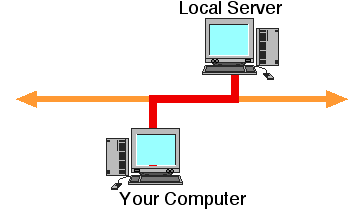
Practical Exercises
To conduct the practical session you will require:
- Direct access to a computer connected to a Local Area Network using TCP/IP
- Ideally you should use a UNIX workstation (or PC running UNIX or Mac with OSX)
- You may remotely access a UNIX workstation across a LAN via telnet from a PC/Mac
- You may remotely access a UNIX workstation across a LAN using X-windows from a PC/Mac
- Some (but not all of this can be done using only a PC with 95/98/2000/XP connected to a LAN)
- To know how to use a "terminal window" (or "command window" on a PC)
- A copy of this information or a WWW client (e.g. IE or Netscape) to view the following pages.
- About 1 hour of time (split into 4 exercises)
Network Commands
Commands you will be using include:
- ping - to send an ICMP
echo request and examine the response
- arp - to examine the Ethernet address
resolution protocol cache
- ifconfig (or ipconfig on a PC) - to examine the configuration of an IP network interface
- netstat - to retrieve network statistics (including routing information) for your computer
- finger - to contact a network finger server on a remote computer
- nslookup (or dig ) - to send Domain Name Server queries to the network
If you are using a UNIX PC/Workstation or MAC running OSX, you may find out more about each of these commands by looking at the manual pages. These are accessed by typing 'man
xxx' where xxx is the name of the command about which you wish to
know more. For example "man ping" will provide information
about how to use the ping command and what options are available to control
the way in which the command is used.
If you are using a PC running Windows 98,2000, XP, you may find out more about each of these commands by typing 'xxx /?' where xxx is the name of the command about which you wish to know more. For example 'ping /?' will usually provide information about how to use the ping command and what options are available to control the way in which the command is used.
Before you start, you should click
HERE for additional instructions.
The four exercises are:
- Finding out about your own network connection
- Learning about computers on your own LAN
- Learning about computers on remote networks
- Learning about the Internet
Gorry Fairhurst - Department of Engineering, University of Aberdeen, Scotland, UK.
http://www.erg.abdn.ac.uk/users/gorry Date: 10/11/1995 Revised: 7/10/2003

